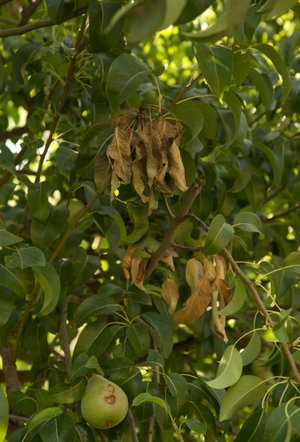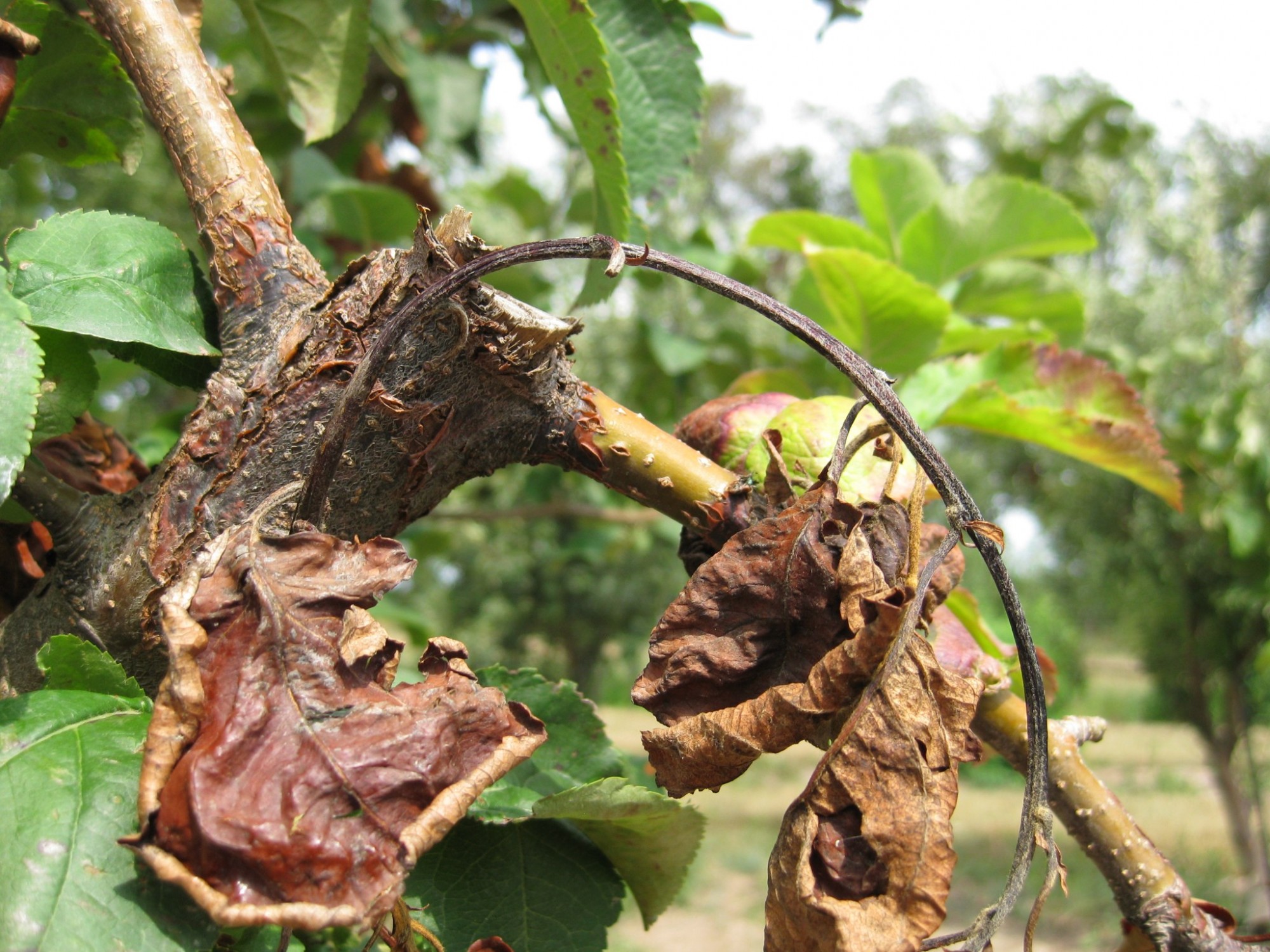

Infected branches should be pruned at least 6 to 8 inches below cankers and infected areas. This is best done while the plants are dormant to avoid spreading the bacteria to healthy parts of the plant (or other plants).

Infected stems and branches should be pruned out of the tree. While they are not completely immune to fire blight, resistant varieties are less impacted by the disease than other varieties. Pear varieties that have some resistance include Magness, Maxine, Moonglow, and Summercrisp. Apple cultivars such as Gold Rush, Empire, Enterprise, Liberty, and Winecrisp have some resistance to fire blight. The best way to manage fire blight is to plant resistant cultivars. Therefore, plants that have been heavily pruned or fertilized with nitrogen (which promotes new growth) are more susceptible to fire blight infection. Young, succulent shoots are susceptible to infection. The wounds can be caused by insects feeding on the plants (they can also spread the bacteria) as well as damage from pruning, wind, and hail. Infection can also occur via wounds on the plant. Insects, such as flies and bees, that feed on the bacterial ooze may transport the bacteria to flowers as they visit and pollinate them. The most common way the bacteria enter plants is via the flowers. The bacteria can also be spread by splashing rain and wind. Insects are attracted to this ooze and will spread it. When conditions in the spring become warm (around 65☏) and wet, the bacteria will begin to multiply and ooze out of the cankers. Place organic mulch around the bottom of fruit trees to keep any fungal spores from splashing up on your tree in heavy rains or when watering them.The bacteria will overwinter along the margins of cankers in infected plants. Remove dead leaves and plant debris at the base of fruit trees.High nitrogen fertilizers encourage new lush growth that attracts fire blight bacteria.Control aphids and insects that spread fire blight on your trees.
#Apple tree fire blight treatment professional
Professional writers are always ready to provide plagiarism-free papaers and ready to meet any deadline. Get high quality writing assistance fast, find original site where you can pay to write a research paper.

Spray the vinegar solution on the fruit tree again in two weeks to ensure the fire blight well treated. Next, step back from the tree and spray the vinegar solution from top to bottom until the leaves are dripping. Point the nozzle at your tree and depress the lever on the wand to spray the tree from bottom to top and underneath the leaves. Pump the handle on the top of the sprayer to pressurize the contents.ĥ. Shake the sprayer gently to mix the contents. Pour in 6 cups of water and then 4 cups of white vinegar. Open a 1-gallon garden sprayer by turning the lid counter clockwise. Dispose of the branches in an area that is at least 100 feet away from the tree.Ĥ. Cut off all branches at least 12 inches below the last branch that is wilted and discolored. Dip the shears in the bleach solution after each cut so as not to spread the infection. Prune all branches with fire blight off with shears. Add one cup of bleach to the bowl and stir the contents with a spoon.ģ. Measure 4 cups of water and pour it into a large bowl. To treat Fire Blight, first put on gloves to protect your hands from the bleach.Ģ. Apple, crabapple (Malus species), and firethorns (Pyracantha species) also are frequently damaged.ġ. Pear (Pyrus species) and quince (Cydonia) are extremely susceptible to Fire Blight. Fire Blight is caused by the bacterium Erwinia amylovora and is a frequently common destructive disease of some fruit trees and related plants. points out an Evergreen Pear (Pyrus Kawakamii) infected with Fire Blight.


 0 kommentar(er)
0 kommentar(er)
